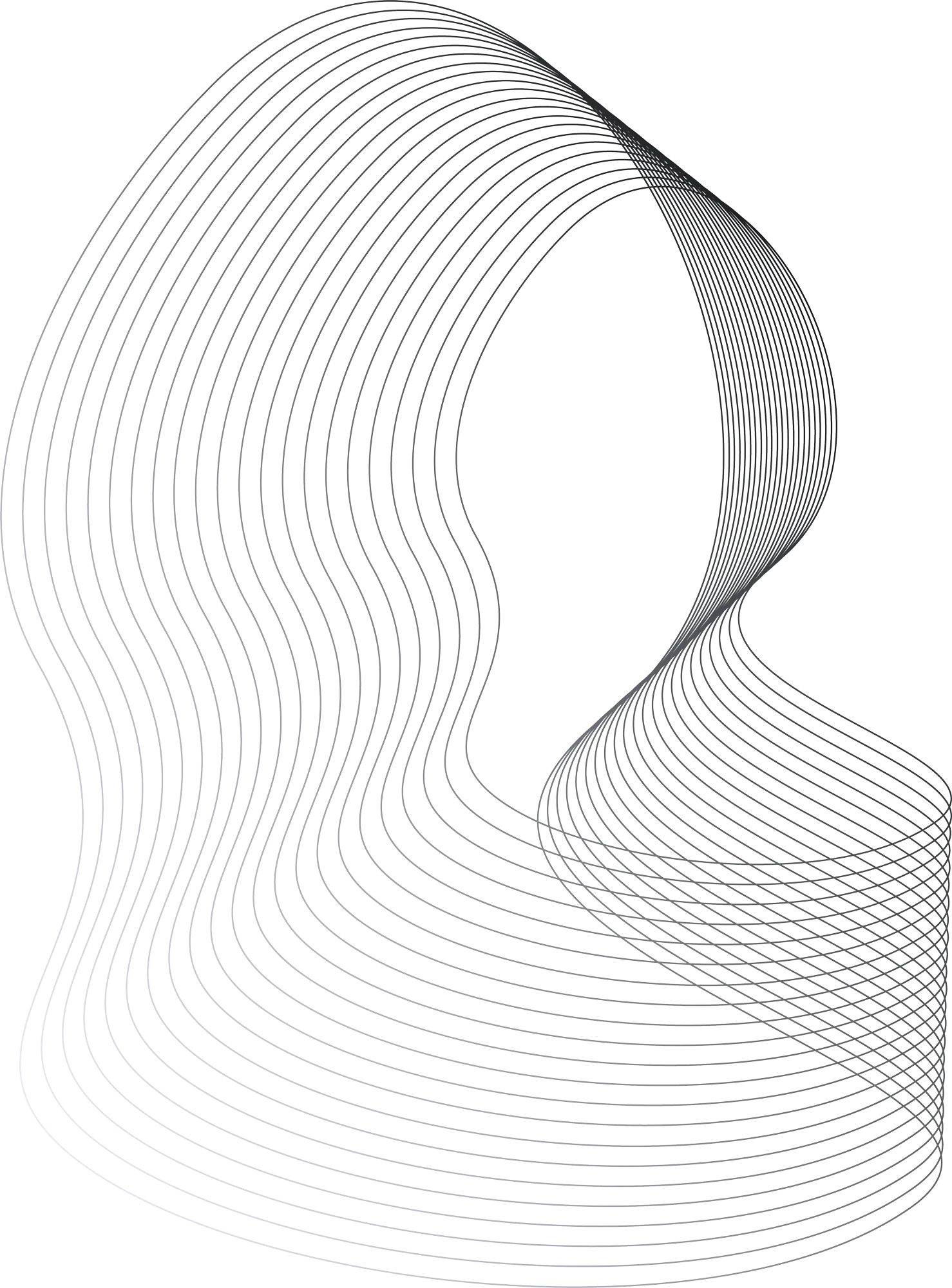Streamline Your Success: Fundraising Marketing Automation Explained
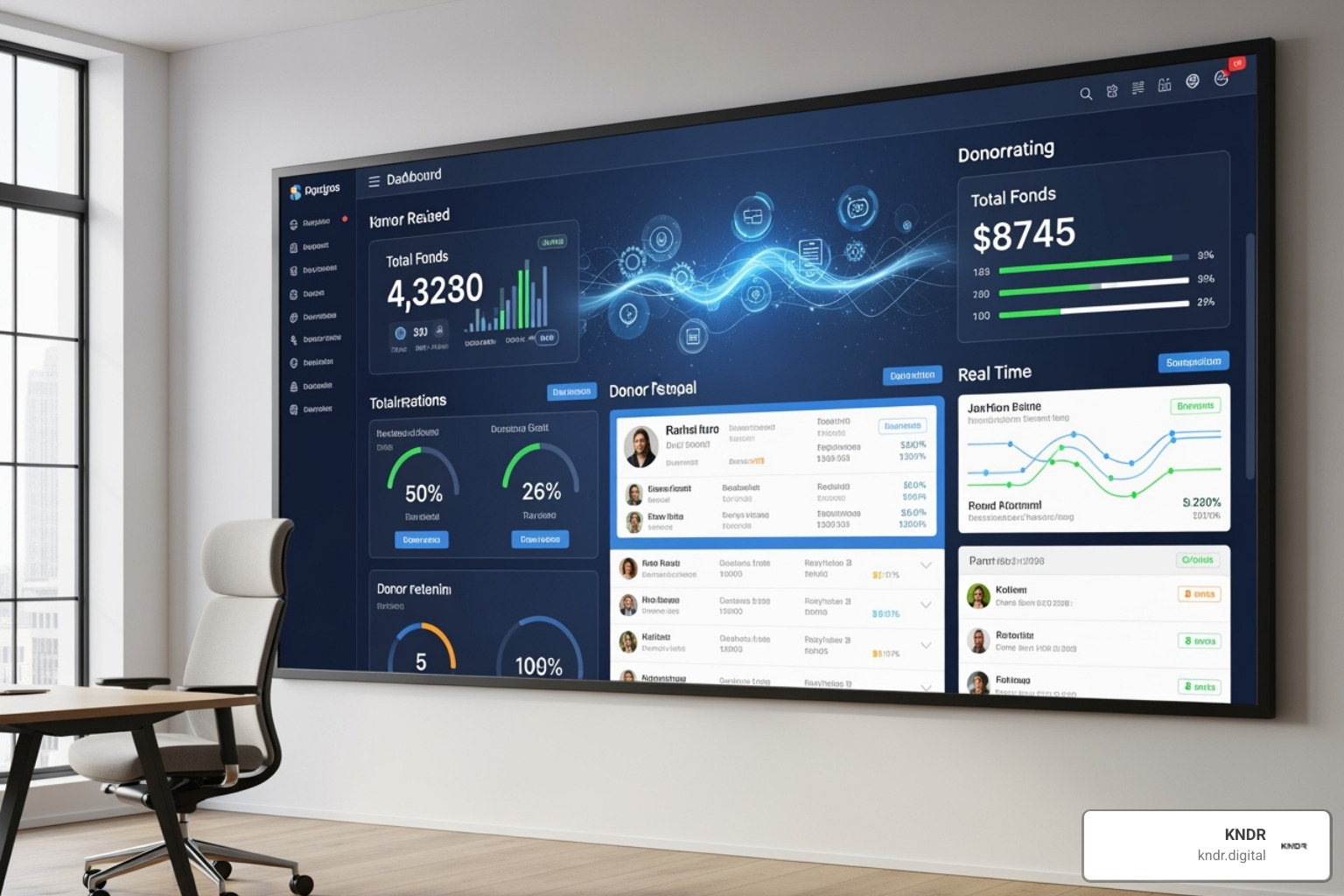
Why Your Nonprofit Needs to Accept Fundraising Marketing Automation Now
Fundraising marketing automation uses software to handle repetitive tasks like sending welcome emails, scheduling social media, and segmenting supporters. It replaces manual touchpoints with smart, automated workflows that respond to donor behavior 24/7, keeping your mission moving forward.
Here's what you can automate to transform your fundraising:
- Donor communication: Welcome series, thank-you messages, and re-engagement campaigns
- Event promotion: Registration reminders, follow-ups, and attendee nurturing
- Campaign management: Segmented appeals, progress updates, and social media scheduling
- Data management: Contact segmentation, record updates, and performance reporting
- Volunteer onboarding: Training sequences, shift reminders, and feedback collection
According to The Urban Institute, the vast majority of the 1.8 million U.S. nonprofits have annual budgets under $500,000. For these small teams, the challenge is balancing fundraising with donor engagement. Marketing automation acts as a force multiplier, handling repetitive tasks so your staff can focus on building relationships and driving strategic initiatives.
Research shows 63% of companies that outgrow competitors use marketing automation. For nonprofits, this technology creates the consistent, personalized donor experiences needed for lasting relationships and sustainable funding.
I'm Mahir Iskender, CEO of KNDR.digital, where I help mission-driven organizations scale through AI-powered marketing and fundraising marketing automation systems. Over the years, I've seen how the right automation strategy transforms small nonprofit teams into highly effective fundraising machines that compete with much larger organizations.
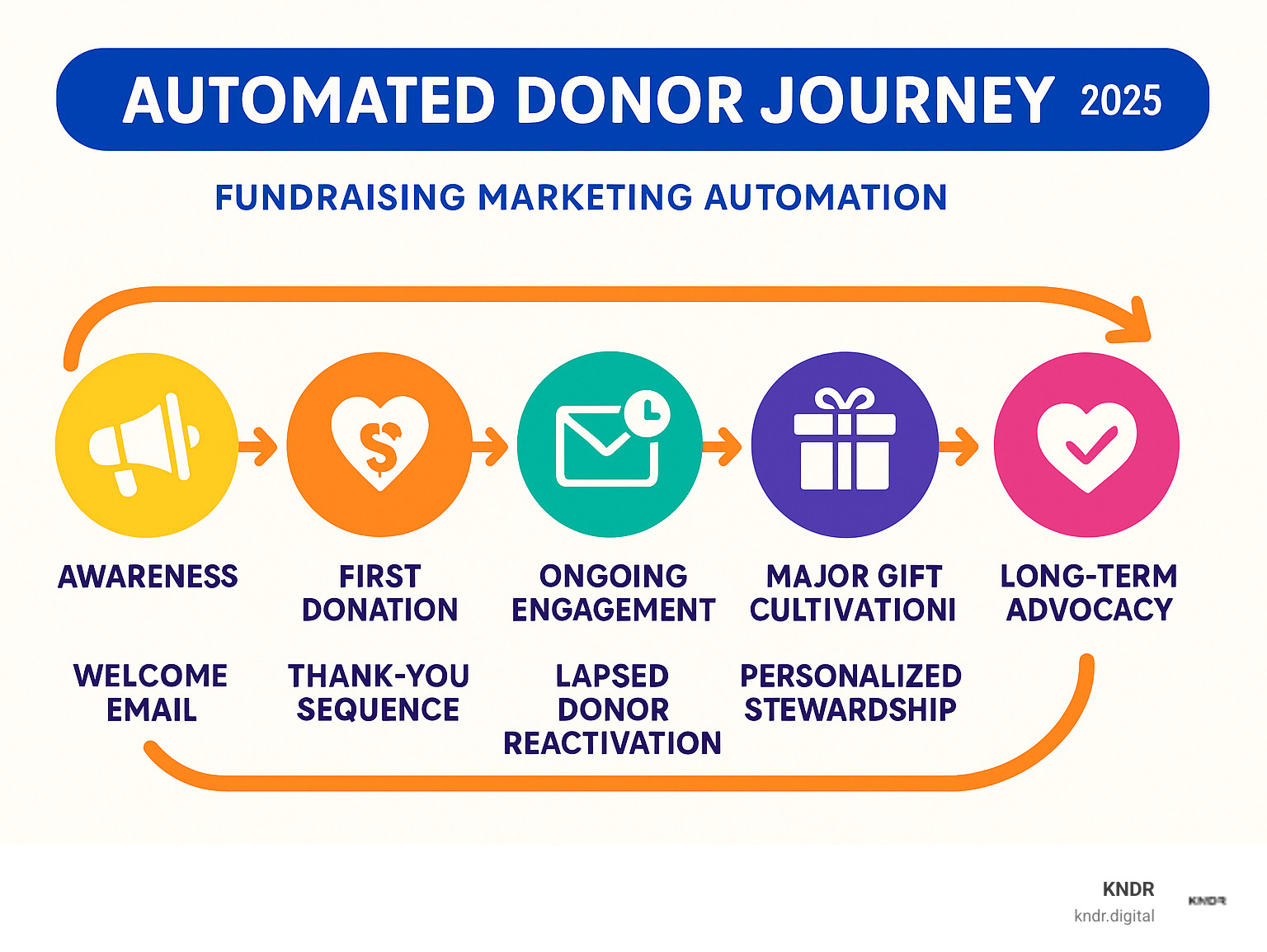
Fundraising marketing automation terms to learn:
- digital fundraising strategies
- digital marketing strategy for fundraising
- donor segmentation strategies
What Is Fundraising Automation and Why Is It a Game-Changer?
Think of fundraising marketing automation as your nonprofit's most dedicated team member—one that works 24/7, never forgets a thank-you note, and handles dozens of tasks at once. This technology is a game-changer for nonprofits needing to do more with less.
It uses software to handle time-consuming tasks. Instead of manually sending welcome emails or lapsed donor reminders, the system uses intelligent workflows that respond to donor behavior. A first-time donation can trigger a welcome series, while a long period of inactivity can trigger a re-engagement campaign.
This transforms your approach from reactive to proactive. Donors receive consistent, timely communication that builds trust, while your team is freed up to focus on building relationships and advancing your mission.
The Core Benefits for Your Nonprofit
The change that fundraising marketing automation brings to your organization touches every corner of your operations, starting with the most precious resource you have: time.
Time becomes your ally. Hours spent on manual tasks like sending thank-yous or updating records are freed up for strategic work. Automation is often called "the cheapest employee you'll ever hire," handling mundane tasks so your team can focus on growing your impact.
Your fundraising ROI improves. Precise, efficient communication makes every fundraising dollar work harder. These Nonprofit Fundraising ROI improvements mean reaching more people and seeing higher conversion rates without a bigger budget.
Donor relationships deepen through personalization at scale. Segment donors by giving history, volunteer status, or engagement to send targeted messages. This personal touch makes every supporter feel valued.
Your reach expands without expanding your payroll. Small nonprofits can manage thousands of donor relationships and run multiple campaigns without hiring more staff, allowing a small team to operate with the efficiency of a much larger one.
From Manual Efforts to Smart Systems
Imagine your development coordinator shifting from a desk cluttered with manual tasks to a clean dashboard of automated workflows. This frees them up for high-value activities, like meeting a major donor prospect.
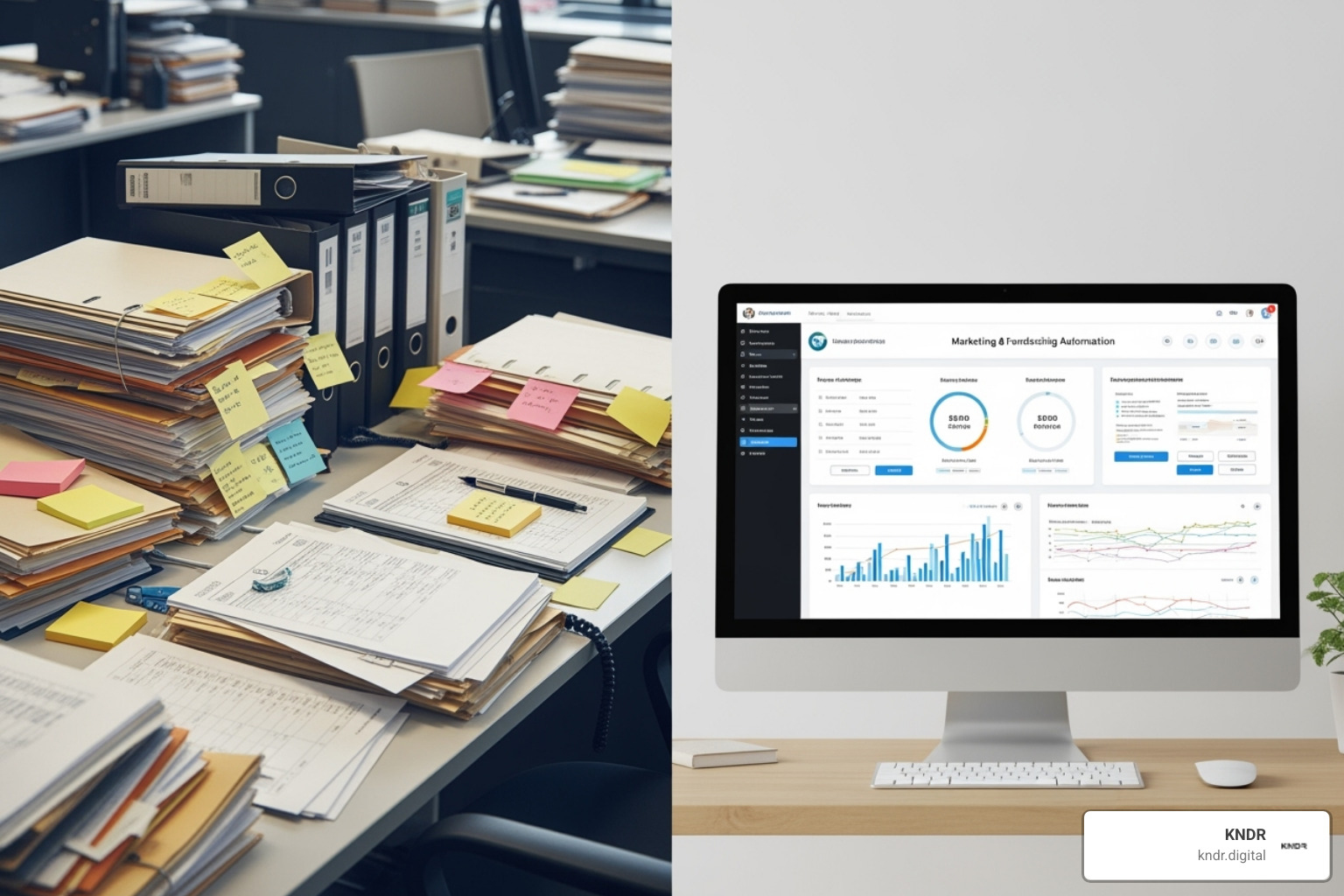
This shift from chaos to clarity delivers a consistent donor experience. Welcome emails, thank-you messages, and follow-ups are sent automatically and on time.
Being proactive changes everything. You can anticipate donor needs and guide them through their journey, nurturing new supporters and re-engaging lapsed ones automatically.
Better data leads to smarter decisions. Automation provides insights on what resonates with supporters—from email subject lines to stories that drive donations. This intelligence helps you continuously improve your strategy.
For organizations ready to dive deeper into data-driven fundraising, exploring Top Nonprofit Analytics Platforms Compared for 2025 can provide valuable insights into choosing the right tools for your automation journey.
The result? Your small team operates with the sophistication and efficiency of much larger organizations, while your donors receive the consistent, personalized attention that builds lasting relationships and sustainable funding.
Key Fundraising Tasks You Can and Should Automate
Fundraising marketing automation transforms daily operations from chaotic to streamlined. It's like having a brilliant assistant who works 24/7.

The key is automating tasks that drain your team's energy. This makes donor communication, data management, campaign execution, volunteer onboarding, and event promotion consistent and efficient.
Your automation platform becomes the conductor of your fundraising orchestra, ensuring every piece plays in harmony. For organizations ready to dive deeper into systematic campaign management, exploring Automated Fundraising Campaigns can provide the roadmap you need.
Automating the Donor Journey
Fundraising marketing automation helps you honor every donor's unique journey. It recognizes where each person is in their relationship with your cause and responds accordingly.
A first donation is a leap of faith. An automated new donor welcome series can immediately show appreciation, share impact stories, and introduce other ways to get involved. This smart relationship-building improves donor retention.
Lapsed donor reactivation campaigns remind supporters why they cared. Automated messages can reference past gifts, show ongoing impact, and gently invite them back, re-establishing a connection.
For your major donor prospects, automation supports the cultivation process. While personal attention is key, automated updates on specific projects or invitations to exclusive content can keep them engaged between meetings.
Small touches also matter. Automated, personalized thank-you messages, birthday greetings, and anniversary emails turn transactions into relationships by creating lasting emotional connections.
This systematic approach to donor care is what separates thriving organizations from struggling ones. For more insights on building these crucial connections, dive into our comprehensive guide on Nonprofit Donor Engagement Strategies.
Streamlining Campaign and Event Management
Fundraising campaigns and events are complex. Automation handles the predictable parts, freeing you to focus on creative and strategic elements.
Automated event reminders ensure high attendance by sending timed messages with key details. Post-event follow-ups can thank attendees, share photos, and gather feedback to capture momentum.
Social media scheduling makes your online presence strategic, not sporadic. Plan and schedule content weeks in advance to maintain a consistent, engaging presence even during busy times.
Campaign management becomes more powerful with automation. Send segmented campaign appeals to different donor groups and use real-time progress updates to create excitement and urgency.
The result? Your campaigns run smoother, your events feel more professional, and your team stays focused on what humans do best—building authentic relationships and creating compelling content. To master this approach, explore our detailed insights on Fundraising Campaign Management.
Enhancing Data and Reporting
Data is the secret weapon for growth. Fundraising marketing automation turns supporter information into a tool for better decisions and stronger relationships.
Automatic contact segmentation organizes supporters as they interact with you. For example, first-time donors can be added to a nurture sequence, and event attendees can be tagged for future invitations, keeping communications relevant.
Automated donor record updates eliminate manual data entry. A donor's profile is updated automatically when they donate, click a link, or attend an event, giving your team a complete, real-time picture.
Smart task generation prompts your team at key moments. The system can create a task for a personal thank-you call after a large gift or flag a highly engaged supporter as a major donor prospect.
Performance reporting becomes an ongoing insight engine, not a monthly chore. See which emails and campaigns are most effective. Some systems can even append wealth data automatically, helping identify supporters with greater giving capacity.
The foundation for all this smart automation is solid Donor Management Software that integrates seamlessly with your other systems. When your data flows smoothly between platforms, every interaction becomes an opportunity to serve your supporters better and advance your mission more effectively.
Your 5-Step Guide to Implementing Fundraising Marketing Automation
Getting started with fundraising marketing automation is manageable with a clear plan: strategy before software. This groundwork is essential for building workflows that transform donor relationships. For additional insights on getting started, check out How to Automate Marketing for Nonprofits.
Step 1: Establish SMART Goals and Clean Your Data
First, define success with SMART goals, such as "increase first-year donor retention by 15% in 12 months." Concrete targets will guide your strategy and measure success.
Next, ensure you have clean data. Poor data quality undermines automation. Your CRM must be the single source of truth, so remove duplicates and update contact information before you begin. A week spent on data hygiene saves months of headaches. When you're ready to choose a system, our guide on Charity CRM Solutions can help.
Step 2: Segment Your Audience and Map Their Journeys
Since not all supporters are the same, your communications shouldn't be. Create donor personas—profiles of supporter types like first-time donors or recurring givers—to understand their motivations.
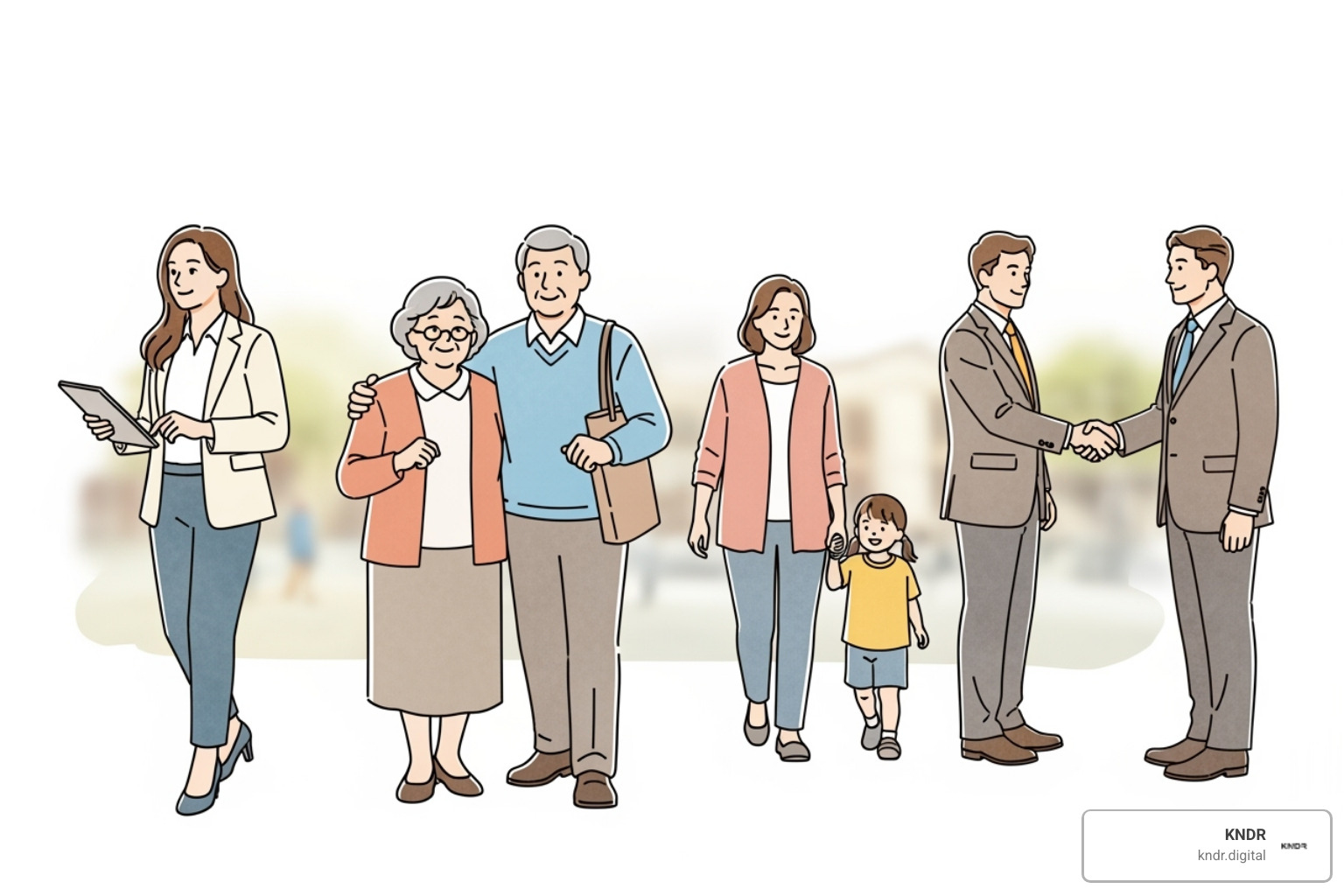
Segment your audience based on these personas to send targeted messages that feel personal. Then, map the donor journey for each segment, tracing the ideal path from awareness to advocacy. This map becomes the blueprint for your automated workflows.
For detailed strategies on this crucial step, explore our Donor Segmentation Best Practices.
Step 3: Create Personalized Content and Define Triggers
Craft resonant messages for each stage of the donor journey. Develop personalized content that goes beyond names by referencing specific interests or past donations, all while maintaining your authentic brand voice.
You'll find inspiration and examples in our collection of Nonprofit Fundraising Email Examples.
Then, define your triggers and actions using if/then logic. For example: If a donor makes a first gift, then they enter a welcome series. These rules create a responsive system that delivers the right message at the right moment.
Step 4: Choose Your Tools and Build Your Workflows
While a good tool can't fix a bad strategy, choosing the right platform is crucial. Look for essential platform features: robust email marketing, seamless CRM integration, behavior-based triggers, and comprehensive reporting.
Start with simple workflows, like a welcome series for new donors or a post-donation thank-you sequence. The goal is to build a reliable Automated Donation System that works in the background. Don't try to automate everything at once; master one or two high-impact workflows, then expand.
Step 5: Test, Launch, and Refine
Thorough testing is essential. Before launch, send test messages to check triggers, links, and display on all devices.
After launch, monitor key metrics like open, click-through, and conversion rates to see what's working. Automation isn't "set it and forget it." Review your automated campaigns regularly (ideally quarterly) and A/B test elements like subject lines and calls to action. This ongoing optimization is key to achieving significant results and is essential for Online Fundraising Optimization.
Best Practices for Authentic and Effective Automation
Fundraising marketing automation can feel like a warm hug or a cold email. The difference is thoughtful implementation. The goal is not just efficiency, but building genuine connections that make donors feel valued.
Automation acts as your organization's memory, remembering donor milestones and preferences. It's not about replacing human connection, but making every interaction more meaningful.
How to ensure your automated communications remain authentic
Many nonprofits fear automation will feel impersonal. However, authentic automation actually strengthens donor relationships by ensuring every interaction is consistent and relevant.
Personalization is more than using a first name. Reference meaningful details, like a recent donation's specific impact. This shows donors you see them as individuals, not just names in a database.
Maintain your authentic brand voice. If your organization is playful and energetic, your automated emails should be too. Automation handles the delivery; you provide the heart.
Focus on impact, not just asks. Use automation to share stories and updates that celebrate what donors make possible. When you do ask, it will feel more natural and earned.
Smart segmentation is the key to avoiding generic messaging. Tailor content to different donor segments based on their history and interests. When messages are relevant, they feel authentic.
Use automation to create opportunities for human connection. A large gift can trigger an automated thank-you and a task for a personal phone call. This balanced approach to Donor Relationship Management improves, not replaces, relationships.
Compliance and Data Privacy
Respecting donor privacy is essential for maintaining trust and legality. When donors know you respect their data, they are more likely to engage.
Comply with privacy laws like GDPR and CAN-SPAM. This shows respect and involves getting clear consent, being transparent about data use, and collecting only necessary information.
Make unsubscribing easy. It may seem counterintuitive, but giving donors control improves engagement and keeps your list healthy by removing those who aren't interested.
Data security is non-negotiable when choosing your automation platform. Choose a platform that takes security seriously to protect donor information and honor the trust they place in you.
These practices ensure your Digital Fundraising Best Practices build trust while driving results. When donors feel respected, heard, and valued through your automated communications, they don't just give more—they become advocates for your mission.
Frequently Asked Questions about Fundraising Marketing Automation
When considering fundraising marketing automation, nonprofits often have the same questions. Here are the most common ones.
How much does fundraising marketing automation cost?
Costs vary, but it's more affordable than you might think. Most platforms use tiered pricing based on contact list size or email volume, so you only pay for what you use. Many providers offer free tiers for small lists (e.g., under 1,000 contacts). As you grow, expect to invest $20 to $200 monthly.
Always ask for nonprofit discounts. Most platforms offer significant reductions (30% or more), and some even provide free services to qualifying organizations.
Think of automation as an investment, not an expense. The time savings and increased efficiency often pay for the cost within months. It's like hiring your most affordable employee.
Can our small nonprofit really use marketing automation?
Yes! Fundraising marketing automation is a secret weapon for small nonprofits. It's designed to help lean teams with multiple responsibilities do more.
Start simple with a welcome email or thank-you sequence. These small steps save hours and create a more professional donor experience.
Modern platforms are user-friendly; you don't need to be a tech expert. KNDR's platform, for example, is built to be intuitive for nonprofit teams.
The technology scales with you. As you get more comfortable, you can add more sophisticated automations, evolving from simple emails to comprehensive donor journeys.
Will automation replace our fundraising staff?
No. This is a crucial point. Fundraising marketing automation doesn't replace your team; it empowers them.
Automation handles the repetitive work, freeing your staff to focus on what humans do best: building relationships, crafting stories, and developing strategy.
Your team members can shift from task-executors to strategists. Automation provides the data and bandwidth for them to make smarter decisions and build deeper connections with supporters.
The result? Your staff becomes more effective, more satisfied, and more focused on moving your mission forward. For organizations ready to see how AI can improve rather than replace human creativity and relationship-building, explore our insights on AI-Driven Fundraising.
The bottom line: automation amplifies your team's impact rather than diminishing their importance. It's about working smarter, not harder.
Amplify Your Impact with Automation
Fundraising marketing automation is more than technology; it's a new way to connect with supporters and advance your mission. It's about choosing to work smarter, not harder.
The benefits create a powerful ripple effect: greater efficiency, more professional communications, deeper donor-centricity, and smarter data-driven decisions.
Your staff is freed from administrative tasks to become more strategic. They can focus on cultivating major donor relationships and crafting compelling impact stories while automation handles the routine communications.
While it takes effort, the results are clear: higher donor retention, increased giving, and more engaged teams. Your supporters feel more connected, and your mission gets the resources it deserves.
Implementing a full fundraising marketing automation strategy requires commitment, but the impact is transformative. You're not just adopting software; you're building a sustainable fundraising operation.
For nonprofits ready to leverage advanced AI-driven systems with expert guidance, KNDR offers a results-based approach designed specifically for mission-driven organizations. We understand the unique challenges you face because we work exclusively with nonprofits. Our holistic digital strategies aim for 800+ donations in 45 days or no payment—because we believe in putting our money where our mission is.
Ready to see how a specialized Digital Fundraising Agency can help you achieve your goals? Your donors are waiting to hear from you—let automation help you reach them in ways that truly matter.
